Fort el morro: San Juan National Historic Site (U.S. National Park Service)
Spanish King Charles V (1500-1558) orderd the construction of a fort at El Morro (the promintory overlooking the mouth of the bay) in 1539 to protect San Juan, Puerto Rico and control access to its port. A small structure, which comprises about 10% of the fort that is visible today, was finished that year. Starting in 1587, Spanish engineers began adding to and strengthening the fortress, a process that continued for 400 years. El Morro’s outer walls were built to a thickness of 18 feet starting in 1680. Including exterior “killing grounds” (ground left open for efficient killing of attackers with cannon), El Morro fills up about 70 acres. British naval wonder Sir Francis Drake (1540-1596) led his fleet in an attack on El Morro in 1595, which was a failure: Spanish gunners shot a ball through his cabin. On May 12 1898, a squadron of twelve US Navy ships traded shots with El Morro and bombarded San Juan. The Spanish-American War (1898) ended with yet another Treaty of Paris (1898). Spain ceded Puerto Rico, Guam and the Philippines to the US. El Morro and several government buildings in old San Juan became part of a huge new US army base, Fort Brooke. El Morro’s killing grounds were filled with baseball diamonds, a hospital and a golf course. U! S! A! If one wishes to stretch the boundaries of the US’ involvement in the First World War (1914-1918), it can be said that the US fired its first shots of the war from El Morro on March 21, 1915. During the Second World War (1939-1945) the US army built a huge concrete bunker atop El Morro to direct fire from coastal artillery and keep watch for German submarines. In 1961 the US army left El Morro, and the fort became property of the National Park Service. In 1992, in celebration of the Quincentennial of Columbus’ voyages, the fort’s exterior killing grounds were restored to their former lustrous glory be removing trees, paved roads and parking lots. The fort’s lighthouse, built by the US from 1906 to 1908, was restored to its original Spanish colonial appearance. El Morro was used by director Steven Spielberg in the 1996 movie Amistad, playing the role of a fort in Sierra Leone in which slave auctions were held in 1839. Today, flags of the USA and Puerto Rico fly over El Morro, as well as the Cross of Burgundy flag, a standard that was used by Spanish armed forces around the world from 1506 to 1785. | ||
Fort San Felipe Del Morro Stock-Fotos und Bilder
- CREATIVE
- EDITORIAL
- VIDEOS
Beste Übereinstimmung
Neuestes
Ältestes
Am beliebtesten
Alle Zeiträume24 Stunden48 Stunden72 Stunden7 Tage30 Tage12 MonateAngepasster Zeitraum
Lizenzfrei
Lizenzpflichtig
RF und RM
Durchstöbern Sie 270
fort san felipe del morro Stock-Fotografie und Bilder. Oder starten Sie eine neue Suche, um noch mehr Stock-Fotografie und Bilder zu entdecken.
san felipe del morro castle – fort san felipe del morro stock-fotos und bilderfort san felipe del morro – fort san felipe del morro stock-fotos und bilderel moro fort, puerto rico – fort san felipe del morro stock-fotos und bilderel morro lighthouse and canonballs, san felipe del morro fort, old san juan, san juan, puerto rico, december 2009 – fort san felipe del morro stock-fotos und bilderCastillo San Felipe del Morro, or Morro Castle, San Juan , Puerto Rico.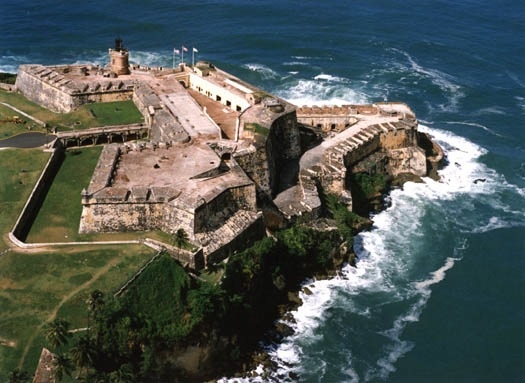 el morro fort – fort san felipe del morro stock-fotos und bilderel morro lighthouse and cannonballs, san felipe del morro fort, old san juan, san juan, puerto rico, december 2009 – fort san felipe del morro stock-fotos und bildersan felipe del morro fort, el morro – fort san felipe del morro stock-fotos und bilderThe San Felipe del Morro castle, UN World Heritage since 1983, in San Juan, on August 1, 2010.The San Felipe del Morro Fort is a fortification built…Cannon at Castillo San Felipe del Morro, San Juan National Historic Site, a national park in Old San Juan, Puerto Rico.fort el morro – fort san felipe del morro stock-fotos und bilderel morro fort in old san juan – fort san felipe del morro stock-fotos und bilderel morro castle in old san juan, puerto rico. – fort san felipe del morro stock-fotos und bilderfort und meer in puerto rico – fort san felipe del morro stock-fotos und bilderfortress walls and lighthouse at dusk, el morro, san felipe del morro fort, old san juan, san juan, puerto rico, december 2009 – fort san felipe del morro stock-fotos und bilderfort san felipe del morro on grassy land against blue sky, san juan, caribbean – fort san felipe del morro stock-fotos und bildersan felipe del morro fortress – fort san felipe del morro stock-fotos und bilderinside charles fort, kinsale – fort san felipe del morro stock-fotos und bildercastillo san felipe del morro – fort san felipe del morro stock-fotos und bildercastillo san felipe del morro 3 – fort san felipe del morro stock-fotos und bildercastillo san felipe del morro 2 – fort san felipe del morro stock-fotos und bilderLe fort San Felipe del Morro à San Juan;en janvier 1994, Porto Rico.
el morro fort – fort san felipe del morro stock-fotos und bilderel morro lighthouse and cannonballs, san felipe del morro fort, old san juan, san juan, puerto rico, december 2009 – fort san felipe del morro stock-fotos und bildersan felipe del morro fort, el morro – fort san felipe del morro stock-fotos und bilderThe San Felipe del Morro castle, UN World Heritage since 1983, in San Juan, on August 1, 2010.The San Felipe del Morro Fort is a fortification built…Cannon at Castillo San Felipe del Morro, San Juan National Historic Site, a national park in Old San Juan, Puerto Rico.fort el morro – fort san felipe del morro stock-fotos und bilderel morro fort in old san juan – fort san felipe del morro stock-fotos und bilderel morro castle in old san juan, puerto rico. – fort san felipe del morro stock-fotos und bilderfort und meer in puerto rico – fort san felipe del morro stock-fotos und bilderfortress walls and lighthouse at dusk, el morro, san felipe del morro fort, old san juan, san juan, puerto rico, december 2009 – fort san felipe del morro stock-fotos und bilderfort san felipe del morro on grassy land against blue sky, san juan, caribbean – fort san felipe del morro stock-fotos und bildersan felipe del morro fortress – fort san felipe del morro stock-fotos und bilderinside charles fort, kinsale – fort san felipe del morro stock-fotos und bildercastillo san felipe del morro – fort san felipe del morro stock-fotos und bildercastillo san felipe del morro 3 – fort san felipe del morro stock-fotos und bildercastillo san felipe del morro 2 – fort san felipe del morro stock-fotos und bilderLe fort San Felipe del Morro à San Juan;en janvier 1994, Porto Rico.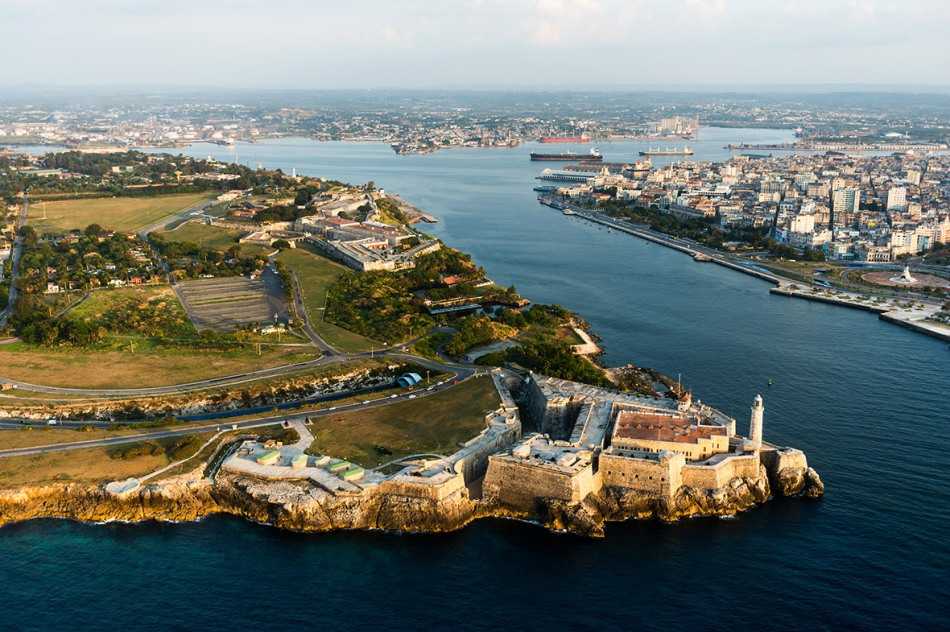 Le fort San Felipe del Morro à San Juan;en janvier 1994, Porto Rico.Echauguette du fort San Felipe del Morro à San Juan;en janvier 1994, Porto Rico.cemetery above atlantic ocean at el morro fort – fort san felipe del morro stock-fotos und bildercastillo del morro san juan puerto rico – fort san felipe del morro stock-fotos und bildercastillo del morro san juan puerto rico – fort san felipe del morro stock-fotos und bilderpolizei patrouillieren paseo de la princesa von old san juan – fort san felipe del morro stock-fotos und bildercastillo san felipe del morro leuchtturm – fort san felipe del morro stock-fotos und bilderGeneral views of San Felipe Del Morro Fort in Old San Juan on June 8, 2017 in San Juan, Puerto Rico.inside el morro fort – fort san felipe del morro stock-fotos und bilderdoorway of el morro fort – fort san felipe del morro stock-fotos und bildercannonballs at el morro fort – fort san felipe del morro stock-fotos und bilderbastion of el morro fort – fort san felipe del morro stock-fotos und bildercemetery at el morro fort – fort san felipe del morro stock-fotos und bildercemetery at el morro fort – fort san felipe del morro stock-fotos und bildercemetery at el morro fort – fort san felipe del morro stock-fotos und bilderbastion of el morro fort – fort san felipe del morro stock-fotos und bilderbastion of el morro fort – fort san felipe del morro stock-fotos und bilderbastion of el morro fort – fort san felipe del morro stock-fotos und bilderbastion of el morro fort – fort san felipe del morro stock-fotos und bilderThe San Felipe del Morro castle, UN World Heritage since 1983, in San Juan, on August 1, 2010.
Le fort San Felipe del Morro à San Juan;en janvier 1994, Porto Rico.Echauguette du fort San Felipe del Morro à San Juan;en janvier 1994, Porto Rico.cemetery above atlantic ocean at el morro fort – fort san felipe del morro stock-fotos und bildercastillo del morro san juan puerto rico – fort san felipe del morro stock-fotos und bildercastillo del morro san juan puerto rico – fort san felipe del morro stock-fotos und bilderpolizei patrouillieren paseo de la princesa von old san juan – fort san felipe del morro stock-fotos und bildercastillo san felipe del morro leuchtturm – fort san felipe del morro stock-fotos und bilderGeneral views of San Felipe Del Morro Fort in Old San Juan on June 8, 2017 in San Juan, Puerto Rico.inside el morro fort – fort san felipe del morro stock-fotos und bilderdoorway of el morro fort – fort san felipe del morro stock-fotos und bildercannonballs at el morro fort – fort san felipe del morro stock-fotos und bilderbastion of el morro fort – fort san felipe del morro stock-fotos und bildercemetery at el morro fort – fort san felipe del morro stock-fotos und bildercemetery at el morro fort – fort san felipe del morro stock-fotos und bildercemetery at el morro fort – fort san felipe del morro stock-fotos und bilderbastion of el morro fort – fort san felipe del morro stock-fotos und bilderbastion of el morro fort – fort san felipe del morro stock-fotos und bilderbastion of el morro fort – fort san felipe del morro stock-fotos und bilderbastion of el morro fort – fort san felipe del morro stock-fotos und bilderThe San Felipe del Morro castle, UN World Heritage since 1983, in San Juan, on August 1, 2010. The San Felipe del Morro Fort is a fortification built…The San Felipe del Morro castle, UN World Heritage since 1983, in San Juan, on August 1, 2010.The San Felipe del Morro Fort is a fortification built…The San Felipe del Morro castle, UN World Heritage since 1983, in San Juan, on August 1, 2010.The San Felipe del Morro Fort is a fortification built…The San Felipe del Morro castle, UN World Heritage since 1983, in San Juan, on August 1, 2010.The San Felipe del Morro Fort is a fortification built…The Lighthouse of the San Felipe del Morro castle, UN World Heritage since 1983, in San Juan, on August 1, 2010.The San Felipe del Morro Fort is a…The San Felipe del Morro castle, UN World Heritage since 1983, in San Juan, on August 1, 2010.The San Felipe del Morro Fort is a fortification built…The San Felipe del Morro castle, UN World Heritage since 1983, in San Juan, on August 1, 2010.The San Felipe del Morro Fort is a fortification built…The San Felipe del Morro castle, UN World Heritage since 1983, in San Juan, on August 1, 2010.
The San Felipe del Morro Fort is a fortification built…The San Felipe del Morro castle, UN World Heritage since 1983, in San Juan, on August 1, 2010.The San Felipe del Morro Fort is a fortification built…The San Felipe del Morro castle, UN World Heritage since 1983, in San Juan, on August 1, 2010.The San Felipe del Morro Fort is a fortification built…The San Felipe del Morro castle, UN World Heritage since 1983, in San Juan, on August 1, 2010.The San Felipe del Morro Fort is a fortification built…The Lighthouse of the San Felipe del Morro castle, UN World Heritage since 1983, in San Juan, on August 1, 2010.The San Felipe del Morro Fort is a…The San Felipe del Morro castle, UN World Heritage since 1983, in San Juan, on August 1, 2010.The San Felipe del Morro Fort is a fortification built…The San Felipe del Morro castle, UN World Heritage since 1983, in San Juan, on August 1, 2010.The San Felipe del Morro Fort is a fortification built…The San Felipe del Morro castle, UN World Heritage since 1983, in San Juan, on August 1, 2010. The San Felipe del Morro Fort is a fortification built…The San Felipe del Morro castle, UN World Heritage since 1983, in San Juan, on August 1, 2010.The San Felipe del Morro Fort is a fortification built…The San Felipe del Morro castle, UN World Heritage since 1983, in San Juan, on August 1, 2010.The San Felipe del Morro Fort is a fortification built…The San Felipe del Morro castle, UN World Heritage since 1983, in San Juan, on August 1, 2010.The San Felipe del Morro Fort is a fortification built…The San Felipe del Morro castle, UN World Heritage since 1983, in San Juan, on August 1, 2010.The San Felipe del Morro Fort is a fortification built…The San Felipe del Morro castle, UN World Heritage since 1983, in San Juan, on August 1, 2010.The San Felipe del Morro Fort is a fortification built…The San Felipe del Morro castle, UN World Heritage since 1983, in San Juan, on August 1, 2010.The San Felipe del Morro Fort is a fortification built…Castillo San Felipe del Morro, or Morro Castle, with the city of San Juan in the background , Puerto Rico.
The San Felipe del Morro Fort is a fortification built…The San Felipe del Morro castle, UN World Heritage since 1983, in San Juan, on August 1, 2010.The San Felipe del Morro Fort is a fortification built…The San Felipe del Morro castle, UN World Heritage since 1983, in San Juan, on August 1, 2010.The San Felipe del Morro Fort is a fortification built…The San Felipe del Morro castle, UN World Heritage since 1983, in San Juan, on August 1, 2010.The San Felipe del Morro Fort is a fortification built…The San Felipe del Morro castle, UN World Heritage since 1983, in San Juan, on August 1, 2010.The San Felipe del Morro Fort is a fortification built…The San Felipe del Morro castle, UN World Heritage since 1983, in San Juan, on August 1, 2010.The San Felipe del Morro Fort is a fortification built…The San Felipe del Morro castle, UN World Heritage since 1983, in San Juan, on August 1, 2010.The San Felipe del Morro Fort is a fortification built…Castillo San Felipe del Morro, or Morro Castle, with the city of San Juan in the background , Puerto Rico. Bastion of Castillo San Felipe del Morro, or Morro Castle, San Juan , Puerto Rico.Sentry box on the bastion of Castillo San Felipe del Morro, or Morro Castle, San Juan , Puerto Rico.Glimpse of the Castillo San Felipe del Morro, or Morro Castle, over San Juan Bay , Puerto Rico.kuppel vom friedhof santa maria magdalena de pazzis, puerto rico – fort san felipe del morro stock-fotos und bilder von 5
Bastion of Castillo San Felipe del Morro, or Morro Castle, San Juan , Puerto Rico.Sentry box on the bastion of Castillo San Felipe del Morro, or Morro Castle, San Juan , Puerto Rico.Glimpse of the Castillo San Felipe del Morro, or Morro Castle, over San Juan Bay , Puerto Rico.kuppel vom friedhof santa maria magdalena de pazzis, puerto rico – fort san felipe del morro stock-fotos und bilder von 5
Puerto Rico: El Morro on the defense of the island
“I set fire to the Spanish king’s beard!” – Francis Drake.
However, Drake could not take El Morro – the Spanish fortress on the island of Puerto Rico, and went to rob other Caribbean colonies. And besides the famous pirate, the fort withstood more than one attack from the Dutch fleet, a bunch of restless British, and later from the American Atlantic squadron at the end of the 19th century. And why, one wonders, did they all climb here? nine0005
Well, of course, because of the treasures of the Spanish crown, plus the island was convenient to use on the waterway to Europe as a “base” for the warehouse of loot in the newly discovered Latin American countries.
On his second voyage to the shores of the West Indies, Christopher Columbus was the first European to set foot on Puerto Rico, a small rectangular island in the very northeast of the Caribbean Sea. The local Indians called their island Boriken, but Columbus gave it the name San Juan Batista (“Saint John the Baptist”). Soon, the city of Puerto Rico appears on the island (that is, “rich harbor”). Subsequently, cartographers mixed up the names, and the name San Juan was assigned to the city, and Puerto Rico was assigned to the island. nine0005
It was to protect San Juan that the powerful, 6-level fort of El Morro was erected, the construction of which began in 1539. Over the next 300+ years, Spain more and more hangs El Morro with different “chips”: either the thickness of the walls is increased from two meters to five and a half, or in general, it was decided to enclose the entire San Juan with a huge wall, the construction of which took 48 years.
All this – huge city walls, the fort of San Cristobal built along the way to repel ground attacks, and, finally, El Morro, armored from all sides, protected San Juan until the very end of 19th century.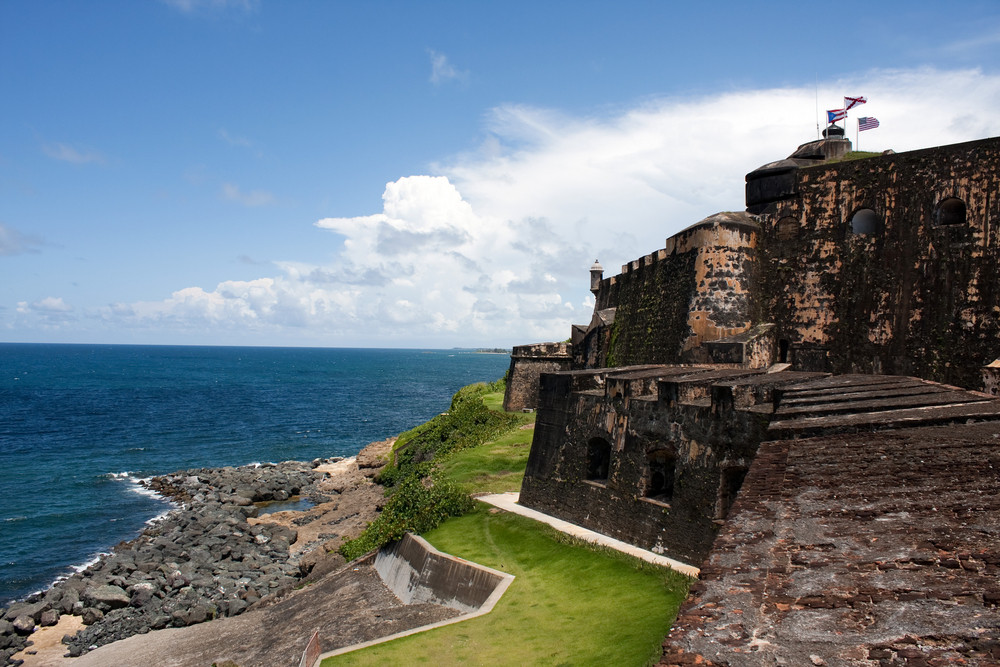
But in 1898, the Spanish-American War broke out, ending Spain’s dominance in Caribbean waters.
In January, during the unrest in Havana, Washington decides to send the battleship “Maine” there in order to show concern to the United States and protect American citizens (Christmas tree, nothing has changed in more than a hundred years). After the explosion of the ironclad on February 15, hostility towards Spain in American society began to grow. Adding fuel to the fire was the fact that, a week before the bombing, the New York Journal published a stolen letter by the Spanish minister in Washington, in which he belittled the current President McKinley and expressed confidence that Spain was ready to fight if the war will happen. nine0005
Based on militant sentiments, the McKinley government, under the pretext of supporting the national uprising in Cuba (the war for Cuban independence that had been going on since 1895), declared war on Spain. During the hostilities, the United States captured Cuba, Puerto Rico, and the Philippines, which belonged to Spain since the 16th century. According to the Peace of Paris, which ended the war, Spain renounced the rights to all these colonies, which were declared “free states”, but found themselves, however, under one form or another of US control.
According to the Peace of Paris, which ended the war, Spain renounced the rights to all these colonies, which were declared “free states”, but found themselves, however, under one form or another of US control.
So, the beautiful El Morro has become the American “Fort Brook”, and the green lawn in front of it has been planted with palm trees and turned into a golf course.
Today, the flags of Puerto Rico, the United States and the Burgundian cross, which used to be used by the Spaniards, flutter over the fort.
The struggle over the status of Puerto Rico does not stop. A certain part of the islanders is striving to turn the country into a US state. Their interests are represented by the Republican Party under a flag of blue, white and red horizontal stripes. nine0017 The independence camp is small and fragmented. Among them is the Communist Party, revived in 2010 (together with the political school named after Vladimir Lenin), whose flag repeats the design of the national flag, but, paradoxically, the red color has been eliminated from it.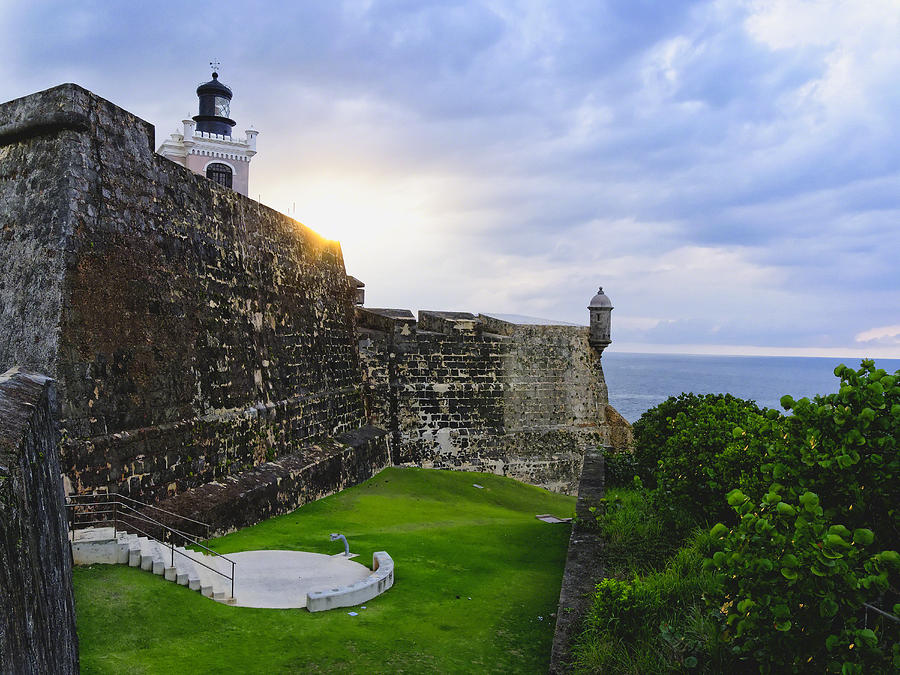 It is the only Communist Party flag in the world that does not have red on it. The majority of Puerto Ricans, participating in periodic referendums, support the idea of maintaining the current status of the country.
It is the only Communist Party flag in the world that does not have red on it. The majority of Puerto Ricans, participating in periodic referendums, support the idea of maintaining the current status of the country.
Entrance to El Morro is $3 (children under 15 free). In the very center is the main square of the fortress, where parades and celebrations take place. A well was also dug here, which provided rain drinking water to all the defenders of the fort. The premises around were used as barracks, powder magazines, prison cells and firing points.
Going down the stairs to the very bottom, you can get to the St. Barbara Battery, the most powerful cannon battery of the entire fort. Most of the cannons here are located almost at sea level in order to be able to fire on the bottoms of ships that have come too close to the fortress. True, the battery participated in hostilities only twice. The rest of the time it was teachings, teachings, teachings. nine0005
And perhaps the most romantic element of the fortress – garitas . Guard houses “garitas” have become a national symbol. Their images can be found in any tourist catalogue, on postcards, on license plates and various souvenirs. And modern young Puerto Ricans like to kiss there 🙂
Guard houses “garitas” have become a national symbol. Their images can be found in any tourist catalogue, on postcards, on license plates and various souvenirs. And modern young Puerto Ricans like to kiss there 🙂
And speaking of toilets. No, but what? Enough history for us, it’s time for the essentials. There are two of them, and from the windows of both there are simply crazy views of the Atlantic. So do not rush to call the police when you see a joyful person with a camera coming out of the toilet. This is not a psycho and not a pervert. He just liked the landscape 😉
Location: Puerto Rico.
Katerina Andreeva.
www.andreev.org
Contents of previous episodes:
1. Southern Caribbean cruise: a brief overview
2. Barbados: on the Atlantic front
3. St. Maarten: beach under the wing of an airplane
El Morro Castle – PICRYL World Public Domain Search
El Morro Castle
Similar
[St. Jean de Luz, Fort Socoa, Pyrenees, France]
St. Jean de Luz, Fort Socoa, Pyrenees, France-LCCN2001698674
Jean de Luz, Fort Socoa, Pyrenees, France-LCCN2001698674
Jean de Luz, Fort Socoa, Pyrenees, France-LCCN2001698674
Vista de Sitges des del cementiri
Road to golf links & lighthouse, North Truro, Mass.
Cuba. Morro Castle, Havana, from harbor
description
Summary
Picryl description: Public domain image of a castle, view, free to use, no copyright restrictions.
Havana
San Cristobal de la Havana, built by the Spaniard Panfilo de Narváez, was a small trading port and was regularly attacked by pirates and French corsairs. Pirate attacks convinced the Spanish crown to protect their ships bound for Spain by gathering them into one large fleet that would cross the Atlantic under the protection of the Spanish Armada (Spanish navy). After 1561, all ships bound for Spain were to be in Havana Bay waiting for better weather, and sail together for Spain by September. This spurred commerce and development in the nearby city of Havana. Ships from all over the New World first brought food to Havana for the fleet to take to Spain. The ships also had to be supplied with food, water and other provisions. In 1563, the Spanish governor of the island moved his residence from Santiago de Cuba to Havana, the de facto capital of the island. By the middle of the 18th century, Havana had over 70,000 inhabitants and was the third largest city in America, ahead of Boston and New York. The city was captured by the British in 1762, but returned to Spain in exchange for Florida. Slavery was legal in Cuba until 1886, and after the defeat of the Confederate States of America in the American Civil War in 1865, many former slaves continued to run the plantations, moving to Havana. As trade between the Caribbean and North America grew, Havana became a thriving and fashionable city. During this period, Havana became known as the Paris of the Antilles. At the beginning of the 20th century, Cuba was occupied by the United States.
This spurred commerce and development in the nearby city of Havana. Ships from all over the New World first brought food to Havana for the fleet to take to Spain. The ships also had to be supplied with food, water and other provisions. In 1563, the Spanish governor of the island moved his residence from Santiago de Cuba to Havana, the de facto capital of the island. By the middle of the 18th century, Havana had over 70,000 inhabitants and was the third largest city in America, ahead of Boston and New York. The city was captured by the British in 1762, but returned to Spain in exchange for Florida. Slavery was legal in Cuba until 1886, and after the defeat of the Confederate States of America in the American Civil War in 1865, many former slaves continued to run the plantations, moving to Havana. As trade between the Caribbean and North America grew, Havana became a thriving and fashionable city. During this period, Havana became known as the Paris of the Antilles. At the beginning of the 20th century, Cuba was occupied by the United States. The US occupation ended at 1902, and Cuba became part of the Soviet Union. Alcohol prohibition in the US in the 1920s helped Havana become a destination for picnics, car racing, music shows, organized crime, and sex tourism. Luxury hotels, casinos, nightclubs brought more income than Las Vegas. In 1958, about 300,000 American tourists visited the city. After the 1959 revolution, Fidel Castro promised to improve social services, public housing, and official buildings. This model, the expropriation of all private property, was followed by the American embargo, which hit Havana particularly hard. At 19In 1991, Soviet subsidies ran out and a severe economic downturn led many to believe that communism would soon collapse, however, contrary to events in Europe, Cuba’s communist government continues to exist to this day.
The US occupation ended at 1902, and Cuba became part of the Soviet Union. Alcohol prohibition in the US in the 1920s helped Havana become a destination for picnics, car racing, music shows, organized crime, and sex tourism. Luxury hotels, casinos, nightclubs brought more income than Las Vegas. In 1958, about 300,000 American tourists visited the city. After the 1959 revolution, Fidel Castro promised to improve social services, public housing, and official buildings. This model, the expropriation of all private property, was followed by the American embargo, which hit Havana particularly hard. At 19In 1991, Soviet subsidies ran out and a severe economic downturn led many to believe that communism would soon collapse, however, contrary to events in Europe, Cuba’s communist government continues to exist to this day.
Collection – Havana
Havana or Havana is the capital, largest city, province, major port and leading commercial center of Cuba.
label_outline
Tags
Morro Havana Cuba
Fords and fortifications
Cuba
Havana
Dry negatives on plates
Syudad-de la-Khabana
Morro
Castle
El Morro
Harbor
Date_range
2 /01/1903
person
Authors
Detroit Publishing Co.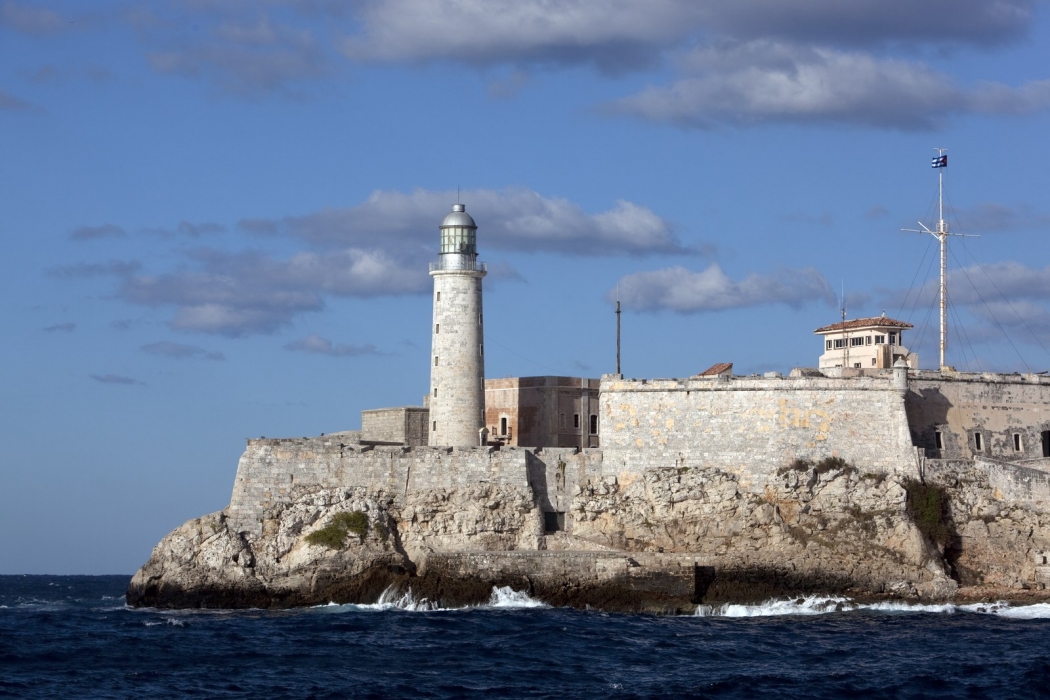
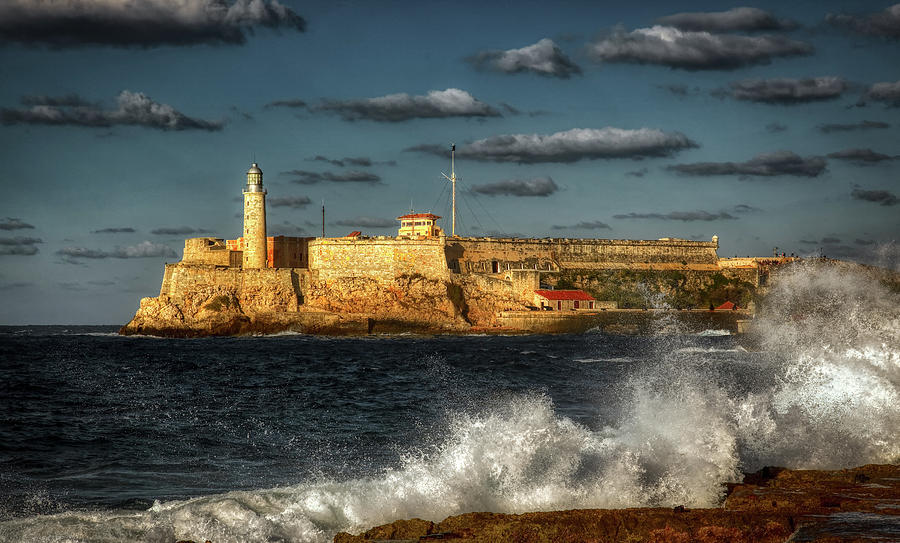 An armed German supply ship, the Odenwald, tried to muscle its way out of the bay to deliver supplies to Kriegsmarine submarines waiting in the Atlantic, only scuttle back to where it started under fire from the fort.
An armed German supply ship, the Odenwald, tried to muscle its way out of the bay to deliver supplies to Kriegsmarine submarines waiting in the Atlantic, only scuttle back to where it started under fire from the fort. El Morro receives some two million visitors a year, making it one of Puerto Rico’s main tourist attractions.
El Morro receives some two million visitors a year, making it one of Puerto Rico’s main tourist attractions.